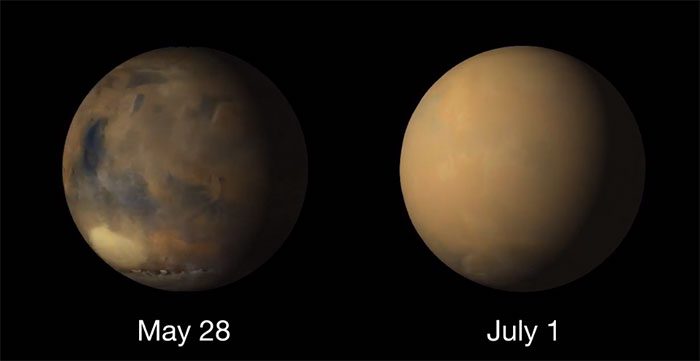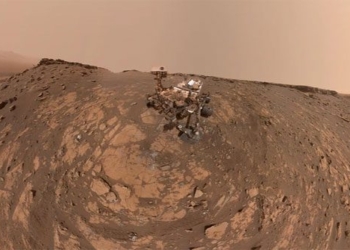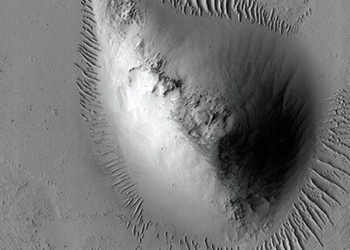The historic dust storm of 2018 “swallowed” the red planet, destroying cold air vortices and bringing an early spring to the southern hemisphere.
(Video: NASA/JPL-Caltech/MSSS).
In June 2018, numerous small dust storms merged into a colossal dust storm that enveloped Mars, obscuring the surface of the red planet from the observation of orbiting spacecraft. This phenomenon also “killed” NASA’s Opportunity rover as its solar panels could not receive energy due to the dust cover. New research shows that the storm even affected the seasons on Mars, causing the southern winter to abruptly end early, Cnet reported on July 24.
“This is a great opportunity to understand how a planet-wide dust storm impacts the atmosphere at the Martian poles, where strong winds swirl during winter,” said Paul Streeter, an expert at The Open University (UK).
Streeter and colleagues from The Open University, NASA, and the Russian Academy of Sciences examined data from Mars orbiters and climate models of the red planet to study the storm’s impact on the atmosphere. They found that it caused different effects in the northern and southern hemispheres.

Changes on Mars from May 28 (left) to July 1 (right) during the dust storm of 2018.
The storm pushed a significant amount of dust further south, destroying cold air vortices and bringing an early spring. Meanwhile, the northern hemisphere was not significantly affected, and the seasons there continued as normal.
Streeter presented the new findings at the virtual meeting of the Royal Astronomical Society held on July 23. He believes that continued detailed study of dust storms on Mars, like the one in 2018, is very beneficial. “It provides information about dust deposition processes at the northern and southern poles and helps us understand more about the climate history of the red planet,” he said.





















































